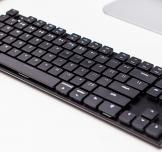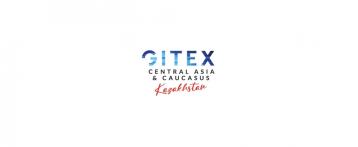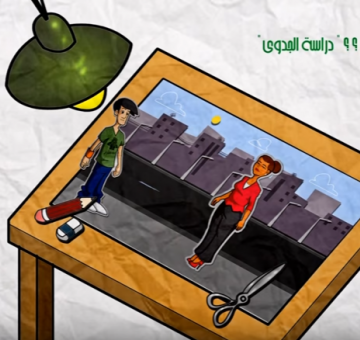24 Simple Approaches to Generate New Ideas in the Workplace (Part 1/2)

Good ideas just happen. We just need to be aware. The ideas are all around us. They just pop up out of nowhere. Everyone has the potential to be creative. It is not connected to the innate intelligence we all possess. It is in the way we live, work and enjoy.
What is creativity? Then…
Creativity is a random act of awareness, which pops out of nowhere and usually and always turns a raw or an unrefined thing into something beautiful, real and of great value.
Creativity is Ubiquitous. The “Creativity at work” blog says Creativity is the act of turning new and imaginative ideas into reality. Wikipedia on Creativity says that Creativity is a phenomenon whereby something new or somehow valuable is formed. The created item is usually intangible.
Brian Clegg and Paul Birch write in their book “Instant creativity” that Creativity is elusive. There is an “artistic creativity” which involves writing a book or producing a piece of music and then there is the “creativity of discovery”, here we discover or invent new products and things and then finally there is the “creativity of Humor” which involves seeing the world differently. From the perspective of organizational, business or work challenges, creativity or solving with creative ideas usually involves all the three aspects of creativity.
What are the practical challenges for having creative ideas?
From an organizational or a business context, creativity is not a fancy nice to have feature anymore. In fact, without it very few companies would have survived today. When solving our work challenges, without a creative idea, we would be looking at the same problem day in and day out, without viewing it from a different frame of mind. Old problems would still remain.
We may just accept the need for creativity and acknowledge it by recruiting a few creative people from the market to serve our needs. It is good in a way, but we are missing to solve our work challenges through our own creative ideas. We may not know; our ideas may be the best and we are the ones who know the problems better than the paid external talent.
Everyone has the creative potential and it is just that we are not aware of it and therefore not using it. Some have even suppressed it. There could be many reasons.
The reasons for not using our creativity could be many. It could be that we are not in the right mood, or it is the wrong timing and also it could be in the way we have been educated. We know it or not the major emphasis on today’s education is focused on getting the right answer or the required answer rather than coming up with a creative solution.
Many of us would have come through an education system which lays emphasis on regurgitation. Our examinations force us to write answers which the examiners want rather than writing creative answers or offering creative solutions to problems. Even in the corporate business environments there is no chance for failure the focus is more on quick results.
But it is only through failures that we learn. Failures shouldn’t matter to us. It is only through facing them that we will achieve creativity. Everyone should be given a free hand to express and contribute. Knowing that you would fail shouldn’t be ridiculed.
The other areas are psychological which involve having a tunnel vision, which is not being able to see beyond one’s immediate activity having a narrow view of things and then there is also the lack of inspiration.
Practical methods to adopt to solve work challenges
The methods mentioned here, willingly take you off from a well proven established viewpoint to compel you to do something which you otherwise wouldn’t do. This would be uncomfortable in the beginning but it slowly leads you on to the path of generating creative ideas.
When you follow these methods, it is natural that you come up with something that is entirely different. It is an opportunity to look at your work challenges from a fresh perspective and from a different frame of mind.
Practical method 1: Ask the question “What’s the work challenge”?
This addresses the question what’s the problem within your current work area. Generating creative ideas is generally a two-step process where it involves individually approaching the problem as well as taking help of the group. As an individual, you come up with an initial rough idea and then you develop and refine those creative ideas better with a group.
Let’s look at some practical ways in addressing “what’s the work challenge”. This aims at coming up with an appropriate set of requirements. Initially, we may not know what we may need. The question may not be clear in the beginning. But after a series of “How to” questioning or questions, something begins to emerge.
1. New pathways
Here, this method is used to find the real work challenge or the problem underlying the problem statement. We need to keep asking the question “Why” when somebody uses the question “How to”. We keep asking “Why” a lot of times. This keeps continuing for some time till we reach a situation where each ‘Why” question becomes a “How to” question on its own.
2. Event triggers
We generate a random series of triggers in the in the form of a connected concept, product or a service. We then use this to generate fresh set of creative ideas.
We usually start with the current work challenge we are working on and then trigger a chain of events in the form of an associated concept or a product which is connected to the original problem at a higher level or at a lower level. We then stop whenever the event trigger makes us think of a new creative idea.
3. No action taken
What would happen if you don’t act? Just be still. There are possibly two outcomes for this. One, we will have a clear and a better idea of the benefits that we will accrue for not acting. The benefits so accrued will be cues to our creative ideas. Two, we might also know the difficulties for not taking the action.
4. The three charts
Hang three charts or white boards. In the first chart, mention briefly the current situation. In the second chart, mention the obstacles for achieving your goals and in the last chart, mention where you want to be. We would begin to notice as we write down that most of the obstacles can be converted to “How to” problem statements on their own.
5. Read articles and stories
Now and then we should keep reading articles and stories that we have not read before. We need to be aware that we are following this method. Creative ideas bounce off when we come back. We need to keep the problem statement active in our sub-conscious mind.
When we come back and look at the current problems, we would be finding it in a totally different light. It would be a surprise that we have not thought about this before.
6. Take a walk
Take a walk in the park and come back to revisit the challenge. You will notice something different already.
7. In others’ shoes
Whenever you are in your organization, spend some time observing your organizational hierarchy. People work in different roles and grades. You can start visualizing the problem from a senior’s perspective. For e.g. “How the CEO of the company would look at the challenge” then go on to do it in the middle management positions of the company and also how the same problem would be handled by an employee at the lowest level. See yourself in their shoes and view the problem and see how it would affect them and their world.
8. Deadlines
Generally, when a deadline is imposed we would look at the problem differently. We would state the problem and its requirements in a different manner. It is good to view this under different time scales in days, weeks and months.
9. Consider “What if” scenarios
Consider different scenarios that would make a different assumption about the problem. Ask “What if” to generate different “How to” statements. For e.g. “What if a war broke out” and how would you see the problem now?
10. Go beyond the normal
Look for scenarios where you deliver beyond the normal. Kind of being extraordinary. Instead of the usual 10-20% improvement, go for 70-80% improvement in your product or service and then see how you would rephrase or look at the problem in a totally different view.
11. Huge resources at your disposal as a gift
Visualize what you would do if you had huge resources at your disposal given to you as a gift to handle the problem. How would you view the problem? How would you direct your staff to get your work done? What work would they do? What can you learn from this? These are some the scenarios to consider to view the problem in new light.
12. Shout the drawbacks of your best product or service
Find faults and drawbacks of your best product or service in market areas and niches where they are actually hopeless. This way you will end up finding far more useful ideas for improvement. You will be seeing the problems in new light.
Wait for Part 2 of the article to know about more practical methods to generate creative ideas.





































































EgyptInnovate site is not responsible for the content of the comments